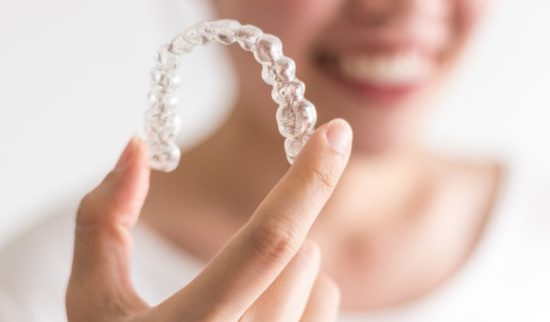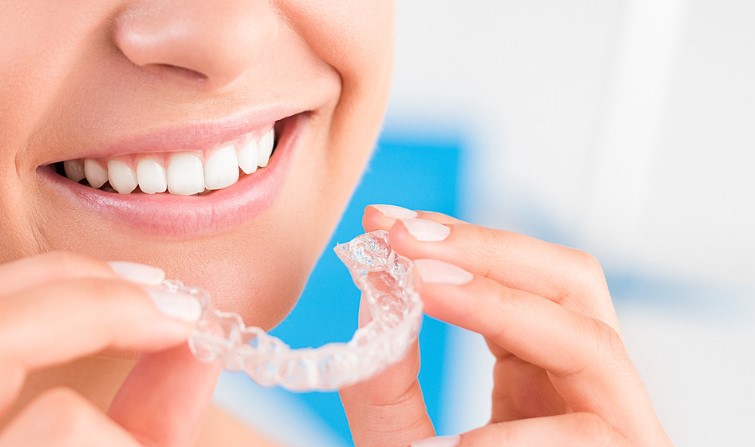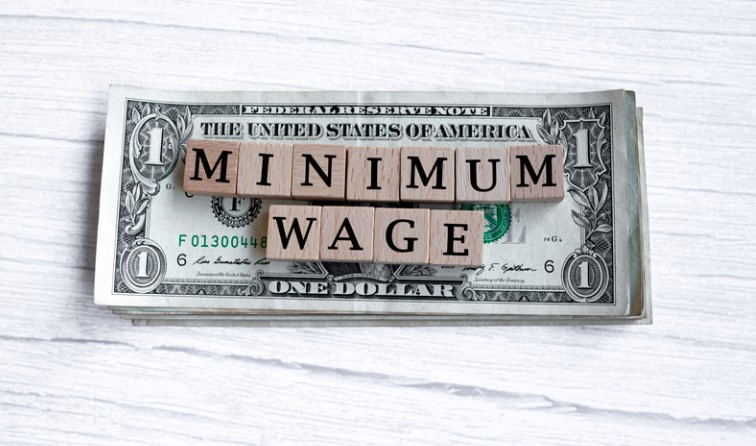Are you tired of traditional metal braces but still want a straighter smile? Look no further than Invisalign – the clear and removable alternative to braces. But how much does this innovative treatment cost in Canada? Keep reading to find out everything you need to know about Invisalign, including its process, materials, and, most importantly, price. Get ready to achieve your dream smile without breaking the bank!
What is Invisalign?

Invisalign is a cutting-edge orthodontic procedure that straightens teeth using clear, removable aligners. Unlike traditional braces, Invisalign aligners are made of a thermoplastic material that is custom-fit to each patient’s mouth. This makes them virtually invisible, allowing patients to straighten their teeth without feeling self-conscious or embarrassed.
The process of getting Invisalign involves several steps. First, your dentist will take x-rays and impressions of your teeth to create a 3D model. Then, they will use this model to map out the movements your teeth need to make in order to achieve the desired results. From there, a series of custom-made aligners will be created for you, each designed to shift your teeth into place gradually.
One of the most significant advantages of Invisalign is that its clear nature allows you to remove them when eating or brushing your teeth – something not possible with traditional braces, where food can easily get stuck between brackets and wires.
Invisalign provides an innovative way for people with misaligned or crooked teeth to improve their smile discreetly and comfortably!
What is Invisalign Made From?
Invisalign is a popular orthodontic treatment that involves wearing a series of clear aligners to straighten teeth. But have you ever wondered what these aligners are actually made from?
The answer is a patented thermoplastic material. This material is strong, flexible and able to be formed into a wide range of shapes. It’s also non-toxic and BPA-free, which means it’s safe for your mouth.
How Does the Invisalign Process Work?

The Invisalign process starts with a consultation with an orthodontist or dentist who is trained to use the system. The specialist will examine your teeth and determine if you are a good candidate for the treatment.
If it’s determined that Invisalign is right for you, the next step is creating a 3D digital image of your teeth using advanced computer technology. This image will be used to create custom aligners designed specifically for your teeth.
Once your aligners are ready, you’ll wear them for about two weeks at a time before switching to the next set in the series. Each new set of aligners gently shifts your teeth into place until they reach their final position.
You’ll schedule periodic check-ups with your orthodontist or dentist throughout the process to ensure everything is progressing as planned. Treatment typically takes anywhere from six months to two years, depending on individual needs and goals.
It’s important to note that adherence to wearing the aligners as directed by your provider plays a vital role in achieving successful results with Invisalign. Consistent use ensures proper alignment and improves overall treatment effectiveness.
How Does Invisalign Feel?
When you first start wearing Invisalign aligners, it’s normal to feel a bit of discomfort or pressure. This is because your teeth are gradually shifting into their new positions. However, the good news is that this discomfort typically only lasts for a few days.
One thing that many people appreciate about Invisalign is that the aligners are made from smooth plastic and don’t have any wires or brackets like traditional braces. This means they’re generally more comfortable to wear once you get used to them.
Of course, there may be times when your aligners feel tight or uncomfortable as your teeth move into their next set of positions. You’ll need to wear each set of aligners for 20-22 hours per day in order for them to be effective, so it’s important that they fit snugly against your teeth.
Suppose you do experience any soreness or irritation from wearing Invisalign. In that case, you can try taking over-the-counter pain relievers like ibuprofen or using orthodontic wax to help alleviate any discomfort.
While there may be some initial adjustment period when getting used to wearing Invisalign aligners, most people find them relatively comfortable and easy to wear on a daily basis.
How Much Are Invisalign in Canada?

Invisalign is a popular orthodontic treatment that helps straighten teeth without the need for traditional metal braces. However, before committing to this treatment, many people wonder about the cost of Invisalign in Canada.
The price of Invisalign might vary depending on a number of variables, including the complexity of your case and where you live. Generally speaking, you can expect to pay anywhere from $3,000 to $8,000 for Invisalign treatment in Canada.
It’s important to note that while Invisalign may seem more expensive than traditional metal braces at first glance, it often takes less time and fewer visits to achieve desired results with Invisalign. This means that although there may be a higher upfront cost for some patients, they may end up paying less overall compared to those who choose traditional braces.
Fortunately, many dental insurance plans now cover Invisalign as part of their orthodontic coverage. It’s worth checking with your provider beforehand if you are interested in pursuing this.
While the cost of Invisalign in Canada may seem high initially when compared to other treatments, such as braces or clear aligners, it offers an effective solution for individuals looking for discreet orthodontic care with minimal disruption.
Is Invisalign a Permanent Fix?
One of the most common questions people ask about Invisalign is whether it’s a permanent fix for their dental problems. The answer to that question is somewhat nuanced, as there are different factors at play when it comes to the effectiveness and longevity of Invisalign treatment.
Firstly, it’s important to understand that Invisalign can be highly effective in correcting a wide range of dental issues, including crowded or misaligned teeth, gaps between teeth and bite problems. However, the success of treatment ultimately depends on how closely patients adhere to their prescribed plan.
Secondly, wearing your aligners correctly will produce excellent results over time – some users have reported seeing significant improvements after just a few weeks – if you don’t wear them consistently or follow your dentist’s instructions during treatment, then you could run into long-term issues.
Finally, yet importantly, keep in mind that, like all orthodontic treatments, Invisalign isn’t a permanent solution but rather an investment into improving your smile. Therefore, after completing the initial periodontal treatment with Invisalign, dentists recommend maintaining retainer usage to maintain proper alignment even after completion.
Conclusion
After reading this article, you should better understand what Invisalign is and how much it costs in Canada. Invisalign offers a discreet alternative to traditional metal braces that can help align your teeth without the noticeable appearance of wires and brackets.
Invisalign treatment involves using a series of clear, removable aligners that gradually shift your teeth into their proper position. The process typically takes around 12-18 months, depending on the severity of your case.
While the cost of Invisalign treatment varies from patient to patient, it’s important to consider the long-term benefits and convenience when making a decision. Investing in orthodontic treatment can improve the appearance and overall oral health.
Before committing to any orthodontic treatment, consult an experienced dentist or orthodontist who can evaluate your specific needs and provide personalized recommendations.
Invisalign may be more expensive than traditional braces upfront, but it offers unique advantages, such as easier cleaning and maintenance during use, which could save you money over time.
FAQ – How Much Are Invisalign in Canada?

How much should I budget for Invisalign?
When considering Invisalign treatment, cost is one of the most important factors to consider. The price of Invisalign can vary depending on a variety of factors, such as how much correction is needed and where you live.
On average, the cost of Invisalign in Canada ranges from $3,000 to $8,000. Keep in mind that this is just an estimate, and your specific case may fall outside this range.
It’s always best to schedule a consultation with an orthodontist specializing in Invisalign to get an accurate quote for your needs. During this initial consultation, they will examine your teeth and discuss any potential issues or concerns surrounding your treatment plan.
Many dental insurance plans cover at least some portion of orthodontic treatments like Invisalign. It’s important to check with your provider beforehand so you know what portion (if any) will be covered by insurance and what out-of-pocket expenses you can expect.
Ultimately, deciding whether or not to invest in Invisalign comes down to personal preference and budget constraints. While it may cost more upfront than traditional braces, many patients find the convenience and comfort worth the investment.
Is Invisalign cheaper than braces?
The cost is often a major consideration when it comes to straightening teeth. Many people wonder whether Invisalign is cheaper than traditional braces.
The truth is that the cost of each treatment can vary widely depending on the individual case and where you live. However, in general, Invisalign tends to be more expensive than traditional braces.
There are several reasons for this difference in price. For one, Invisalign aligners need to be custom-made for each patient using advanced 3D imaging technology. This precision comes at a higher price tag compared to the standard brackets and wires used with traditional braces.
Additionally, because Invisalign is considered a newer and more innovative option compared to traditional braces, its overall costs are typically higher.
However, it’s important to keep in mind that there may be other factors that could make Invisalign worth the investment for some patients. For example, if your job requires you to speak publicly or frequently interact with others face-to-face, clear aligners may be a better choice since they are less noticeable than metal braces.
Ultimately though, when deciding between these two options, it’s important to discuss both treatments’ pros and cons with your orthodontist while keeping your budget in mind.
Is Invisalign worth the money?
Invisalign is often advertised as a more discreet and comfortable alternative to traditional braces when it comes to straightening your teeth. However, many people’s big question is whether or not it’s worth the cost.
The truth is that the answer will depend on your individual circumstances. If you’re looking for a solution to correct mild to moderate dental issues such as crooked or gapped teeth, then Invisalign may be a good investment for you. It can also fix issues with bite alignment, making it easier to chew food and speak properly.
One of the biggest advantages of Invisalign is that they are nearly invisible and do not require any brackets or wires attached to your teeth like traditional braces. They also tend to be more comfortable since they are designed specifically for each patient’s mouth.
However, if you have severe dental issues or need extensive orthodontic work done in addition to straightening your teeth, then Invisalign may not be the best option for you. You should consult an orthodontist who can assess your case and recommend the most appropriate treatment plan.
Ultimately, while Invisalign does come at a higher price point than traditional braces (around $5,000-$8,000 CAD), many patients find the benefits outweigh the costs in terms of convenience and aesthetics during their treatment journey.
What is faster braces or Invisalign?
Many people choose to straighten their teeth for various reasons, but one common question is: what is faster, braces or Invisalign? The answer depends on the individual’s specific case and treatment plan.
Braces are typically more effective in treating complex dental issues such as severe overcrowding, overbite, underbite, and crossbite. With traditional braces, metal brackets are attached to each tooth and connected with wires that apply pressure to move the teeth into place. Treatment time can vary depending on the severity of the case but usually takes anywhere from 18 months to 3 years.
On the other hand, Invisalign uses clear plastic aligners that fit snugly over your teeth. They’re virtually invisible and can be easily removed for eating or brushing your teeth. These aligners need to be switched out every few weeks throughout treatment, gradually shifting your teeth until they reach their ideal position.
While less noticeable than traditional braces due to their clear appearance, many patients end up keeping them in all day long unless they are eating or cleaning, which speeds up the progress time frame significantly.
Both options have different benefits and drawbacks concerning cost-effectiveness, speed & level of customization; it’s best to consult with an orthodontist before deciding which option may work better for you!
Why is Invisalign so expensive?
Invisalign is a popular and effective alternative to traditional braces for those seeking orthodontic treatment. While the cost of Invisalign may be higher than that of regular braces, it offers many benefits, such as being virtually invisible, more comfortable, and easier to maintain.
When considering the cost of Invisalign in Canada, it is important to factor in the complexity of your case and the length of treatment needed. Depending on these factors, the average cost ranges between $3,000-$8,000.
One reason why Invisalign may be more expensive than traditional braces is that it requires advanced technology and specialized training for orthodontists. Each set of aligners must be custom-made using 3D imaging technology, which adds to the overall cost.
Additionally, Invisalign aligners are made from high-quality materials that can withstand wear and tear over time while still remaining comfortable for patients.
While Invisalign may come with a higher price tag than other orthodontic treatments like metal braces or clear ceramic brackets, its advantages make it worth investing in if you desire a discreet way to straighten your teeth efficiently.










